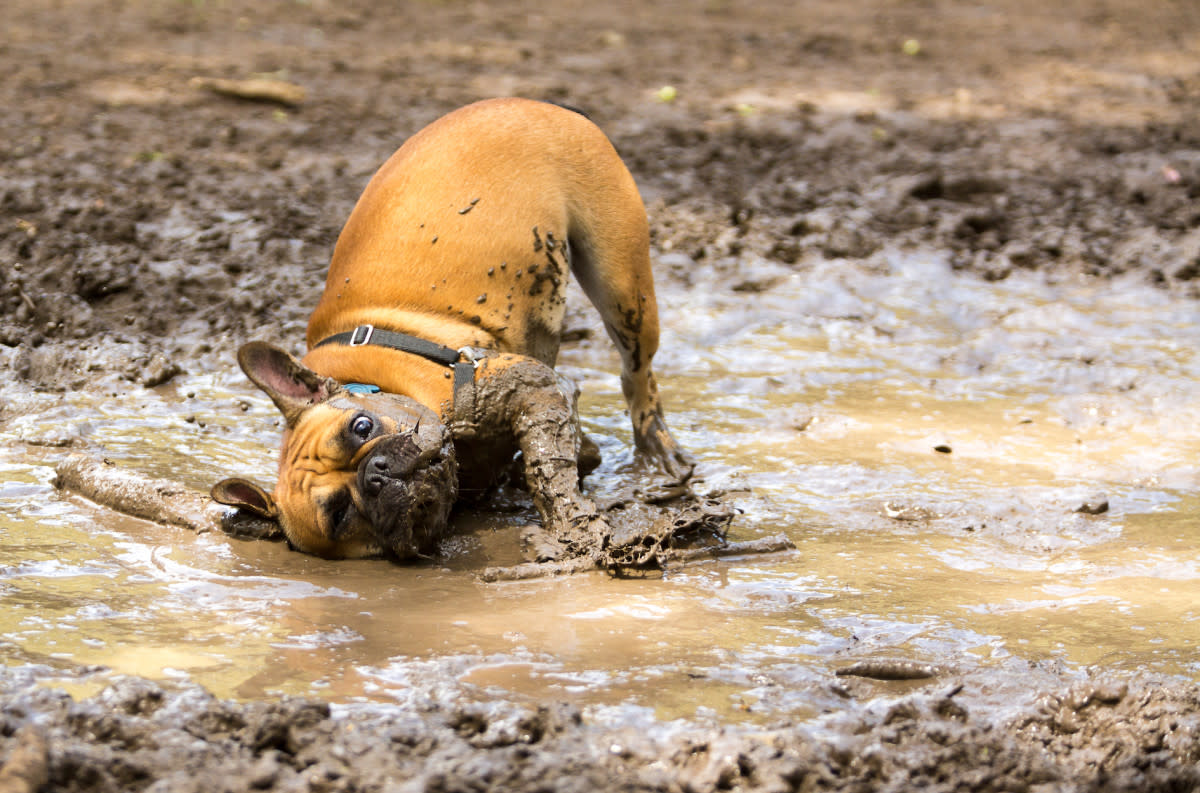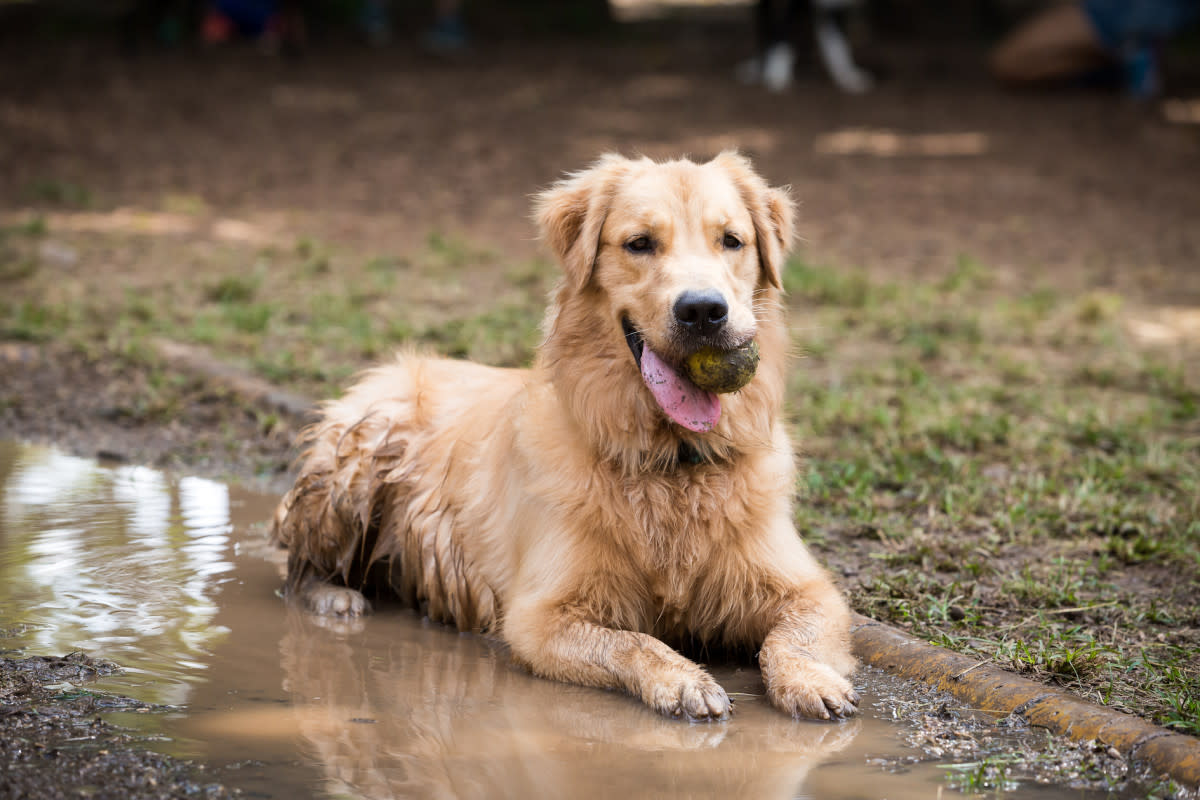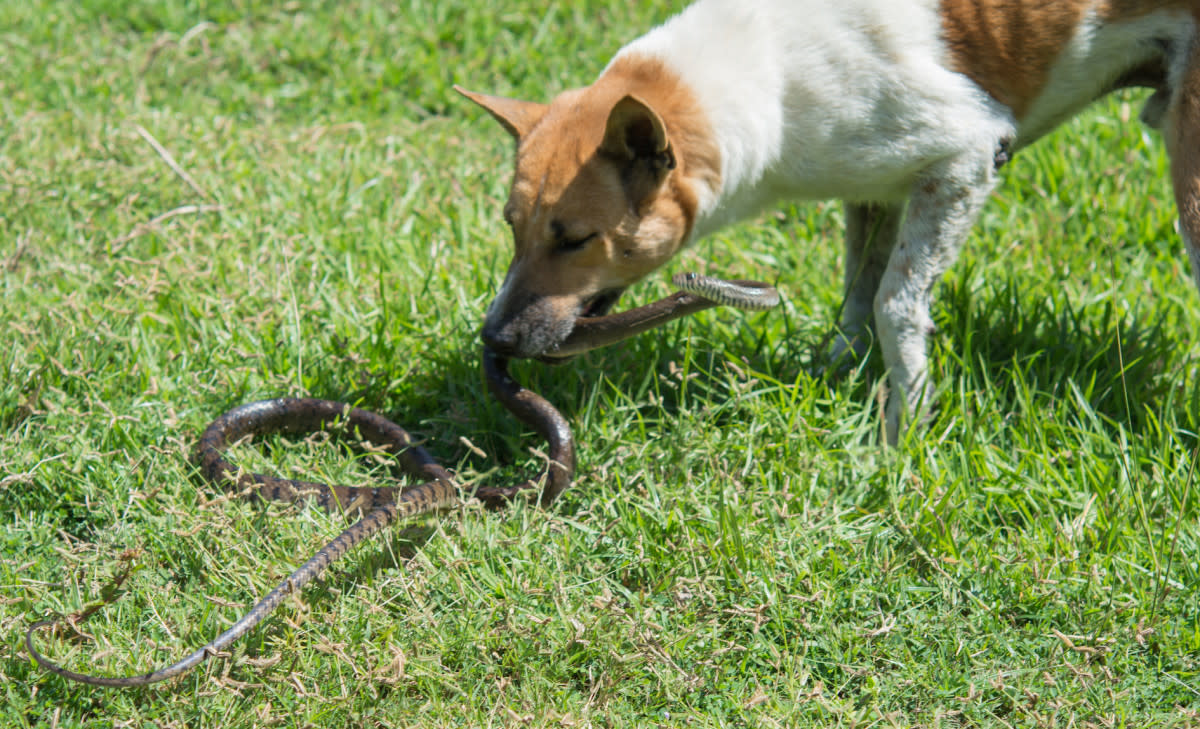Veterinarian Warns Pet Parents To Be Aware of 5 Deadly Dangers to Dogs on Hikes
If you are planning on hiking with your dog this summer, you're probably aware of what safety tips to keep in mind. Always keep your cell phone charged, stay on marked trails, and bring both water for you and your pup.
But there are other things dog owners need to be careful about, and Pet-sitting platform TrustedHousesitters worked with veterinary surgeon Dr. Lily Richards (BSc Hons BVs MRCVS) to share essential hazards that pet owners should be aware of during hikes.“Giving your pup a chance to explore new paths and experience new scent trails, sceneries, and different terrain is great for their active minds,” said Richards. “Knowing the risks of your area or proposed hiking trail can help keep your dog safe from possible illness or toxicities, which could be life-threatening in the worst-case scenario.”
Here's what dog owners should be aware of.
1. Mud

Will Rodrigues/Shutterstock
While rolling in the mud seems like a harmless activity loved by dogs, mud on hiking trails can harbor harmful bacteria and parasites.
“After your hike, remember to wash off any mud for disease prevention and check for ticks to prevent tick-borne diseases such as Lyme disease, babesiosis, and rocky mountain fever,” said Richards.
In addition, ingesting or licking mud off their fur can lead to infections and gastrointestinal issues and objects like sharp rocks can be hidden in mud and cause injuries to your dog's paws or skin.

Will Rodrigues/Shutterstock
2. Still Water
Dogs naturally want to hydrate during walks and while outdoors, often turning to natural sources. However, Richards warns that still water poses many risks and is a breeding ground for diseases that can be transmitted to your pet, such as blue-green algae, leptospirosis, schistosomiasis, giardia, cryptosporidium, E. coli, and liver fluke.
The bacteria in puddles can be deadly for your dog when ingested, even if your dog’s vaccines are up to date, so keep an eye on your pup around water and ensure you have drinking water and a bowl with you.

srisakorn wonglakorn/Shutterstock
3. Leafy Litter
Snakes become more active in the spring and tend to favor leaf litter, increasing the risk of a potentially dangerous encounter. Keep your dog close to you on the trail to prevent accidental bites.
“Know what to look out for in your area and how to handle those dangers, for example, the snake breeds and times of year and days they are most active and likely to attack,” said Richards.
Related: Gift Ideas for People Who Hike with Dogs Are Brilliant
4. Ticks, Fleas, Slugs, Snails
Spring and summer are the prime seasons for these ticks and fleas, which can transmit serious diseases to your pets. Apply a veterinarian-approved tick and flea preventative treatment before hiking and check your dog thoroughly for ticks after each hike.
“Keep an eye out for slugs and snails,” Richards said. “These creatures can carry parasites and infectious diseases, such as lungworm, that can cause serious disease in your pets.”

dezy/Shutterstock
5. Poisonous Plants
“Different plants cause different symptoms from nausea and vomiting to kidney failure, liver failure, coma and even death, so knowing what to look out for is critical when out and about,” said Richards.
According to Richards, popular plants you might come across on hiking trails that are toxic for dogs include Lily species, hemlock, hydrangea, yew, crocus, ivy, daffodil, foxgloves, rhododendrons, sago palm, azalea, milkweed, tulips, sago palm, bluebells, elderberry, mountain laurel, and mushrooms.
When looking for a dog-friendly trail, Richards recommends:
“A good hiking trail has lots of opportunities to rest out of the heat and in the shade, as well as wide paths, no steep cliffs, and soft surfaces to prevent paw injuries,” said Richards. “Trails should be open so you can spot any risk of predators and see any dangers early and negate them without lots of leaf litter and boggy mud.”
By taking the necessary precautions, dog owners can ensure a fun and safe hiking experience for both them and their canine companions. For more information on poisonous plants to avoid around dogs, visit the TrustedHousesitters blog. To learn more about the TrustedHousesitters platform, visit https://www.trustedhousesitters.com/
Looking for more PetHelpful updates? Follow us on YouTube for more entertaining videos. Or, share your own adorable pet by submitting a video, and sign up for our newsletter for the latest pet updates and tips.


